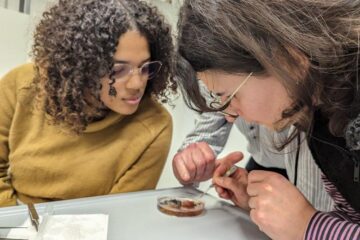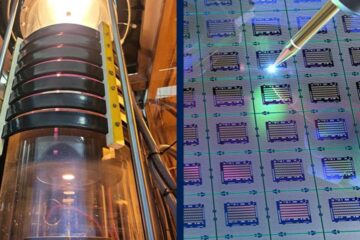European patent on stem cells may be a possibility

This conclusion, which runs counter to the views of the European Group on Ethics under the European Commission, was reached by an interdisciplinary group at the Center for Bioethics at the Karolinska Institute and Uppsala University in an academic article in the international journal Stem Cells.
The article is the result of a unique collaborative effort involving ethics researchers Mats G. Hansson and Gert Helgesson at the Center for Bioethics, Richard Wessman at the Department of Law, Uppsala University, and one of the world’s leading stem cell researchers, Rudolf Jaenisch at the Whitehead Institute for Biomedical Research and the Massachusetts Institute of Technology.
“Our conclusion is that, in principle, stem cells can be patentable and that this is consonant with ethical views that the human embryo should enjoy special protection owing to its capacity to develop into a human being. This will be of interest to a great many people,” says Professor Mats G. Hansson.
Research on embryonic and adult stem cells may yield new possibilities for treating and curing diseases. At the same time, it is ethically controversial, especially the use of stem cells from human embryos. The possibility of patenting these cells has been excluded by several instances, including several European patent authorities and the European Commission’s European Group on Ethics (EGE). According to the EGE, only genetically altered stem cells or cells that have been further developed into certain bodily parts can be eligible for patents. In several European countries patents for stem cells are out of the question, and the European Patent Organization, like various national patent offices, has a wait-and-see policy.
“It was when I understood that people have failed to grasp that the great challenge in stem cell research lies in taking the first step-to succeed in getting the cells to survive in a culture medium-that I got the idea for the article. If the cells survive, it will be in a form that is completely different from their origin, so they should be patentable,” says Mats G. Hansson.
The great challenge for stem cell scientists is thus not primarily to alter embryonic stem cells genetically or in some other way. The difficult scientific and technological task is to get these cells to survive in a laboratory environment in the first place, outside the blastocyst cells they were taken from. To develop stem cells entails a radical modification that is achieved by altering the various environmental factors that make the cells grow-changes that irreversibly break down the protective protein casing that surround the cells’ DNA. A cell isolated from a human embryo is therefore crucially different from what it originally was.
The authors of the article thus conclude that isolated stem cells should thus be eligible for both method and product patents as long as the research meets accepted patent requirements, such as degree of invention and industrial application. As regards the scope of such patents, a conservative approach is proposed, to prevent individual patents from hampering important research, which may be the consequence of two patents granted in the U.S., with extremely broad exclusive rights.
Media Contact
More Information:
http://stemcells.alphamedpress.org/papbyrecent.dtlAll latest news from the category: Life Sciences and Chemistry
Articles and reports from the Life Sciences and chemistry area deal with applied and basic research into modern biology, chemistry and human medicine.
Valuable information can be found on a range of life sciences fields including bacteriology, biochemistry, bionics, bioinformatics, biophysics, biotechnology, genetics, geobotany, human biology, marine biology, microbiology, molecular biology, cellular biology, zoology, bioinorganic chemistry, microchemistry and environmental chemistry.
Newest articles

Peptides on Interstellar Ice
A research team led by Dr Serge Krasnokutski from the Astrophysics Laboratory at the Max Planck Institute for Astronomy at the University of Jena had already demonstrated that simple peptides…

A new look at the consequences of light pollution
GAME 2024 begins its experiments in eight countries. Can artificial light at night harm marine algae and impair their important functions for coastal ecosystems? This year’s project of the training…

Silicon Carbide Innovation Alliance to drive industrial-scale semiconductor work
Known for its ability to withstand extreme environments and high voltages, silicon carbide (SiC) is a semiconducting material made up of silicon and carbon atoms arranged into crystals that is…





















